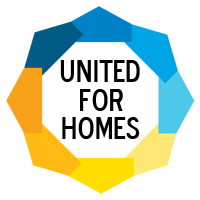Renters in High-Cost Cities Express Strong NIMBYism
Feb 21, 2017
 A report by Michael Hankinson at Harvard’s Joint Center for Housing Studies, When Do Renters Behave Like Homeowners? High Rent, Price Anxiety, and NIMBYism, finds that renters in high-cost housing markets typically support new housing development citywide but are likely to oppose market-rate housing in their own neighborhood. They behave like homeowners who oppose development based on spatial proximity, known as NIMBYism (“not in my back yard”). Renter NIMBYism and institutional arrangements that prioritize neighborhood over citywide interests increase the difficulty of building housing in high-cost cities.
A report by Michael Hankinson at Harvard’s Joint Center for Housing Studies, When Do Renters Behave Like Homeowners? High Rent, Price Anxiety, and NIMBYism, finds that renters in high-cost housing markets typically support new housing development citywide but are likely to oppose market-rate housing in their own neighborhood. They behave like homeowners who oppose development based on spatial proximity, known as NIMBYism (“not in my back yard”). Renter NIMBYism and institutional arrangements that prioritize neighborhood over citywide interests increase the difficulty of building housing in high-cost cities.
In a national survey of 3,019 adults, renters did not exhibit the same level of opposition to new housing as homeowners. Seventy-two percent of homeowners did not support a hypothetical 10% citywide increase in housing supply compared to 41% of renters. Forty-two percent of homeowners supported a hypothetical ban on new housing in their neighborhood compared to 35% of renters.
The survey indicated that homeowners nationwide were less likely to support a proposed building located a half mile or less from their home compared to one two miles from their home. By comparison, the level of support by renters nationwide for a market-rate development was not influenced by the building’s distance from their home. In fact, these renters were somewhat more likely to support buildings with affordable units less than a mile from their home compared to developments two miles away.
Renter NIMBYism was apparent, however, in high-cost cities. While renters in high-cost cities were about as likely as renters in other cities to support a 10% increase in their city’s housing supply, they were less likely to support new market-rate development less than one-eighth of a mile from their home compared to development two miles from their home. Renters who felt lower housing prices would be best for their city, indicating they were “price anxious,” were less likely to support market-rate development near their home than those who were not price anxious. One explanation for these findings is that price-anxious renters may fear that a new building in their neighborhood would have little impact on citywide prices but could attract more housing demand to their neighborhood, increasing neighborhood rents.
Mr. Hankinson also conducted an exit poll of 1,660 voters in San Francisco. Seventy-three percent of homeowners and 84% of renters supported a 10% increase in the city’s housing supply. But when it came to their own neighborhood, 40% of homeowners and 62% of renters supported a ban on new housing. Even when Mr. Hankinson controlled for demographics, such as voters’ income, race, age, gender, and ideology, renters were more likely to support a neighborhood ban than homeowners by nine percentage points.
Mr. Hankinson provides strategies to combat residents’ active opposition to new market-rate housing in their neighborhoods. City governments could offer existing renters stronger anti-displacement protections in exchange for changes in zoning that allow higher density development, such as including in new developments affordable units available for neighborhood residents. Mr. Hankinson notes that fair housing must be taken into consideration and that any plan to exchange community benefits for increased density must be standardized citywide. Mr. Hankinson also argues that more research on the political behavior of renters is needed because in some cities renters’ NIMBYism mobilization matches that of homeowners, and these renters can have a significant impact on local political decisions. Homeowners have typically been seen as the influential players in local politics, zoning, and housing policy.
When Do Renters Behave Like Homeowners? High Rent, Price Anxiety, and NIMBYism is available at: http://bit.ly/2lLVrJJ